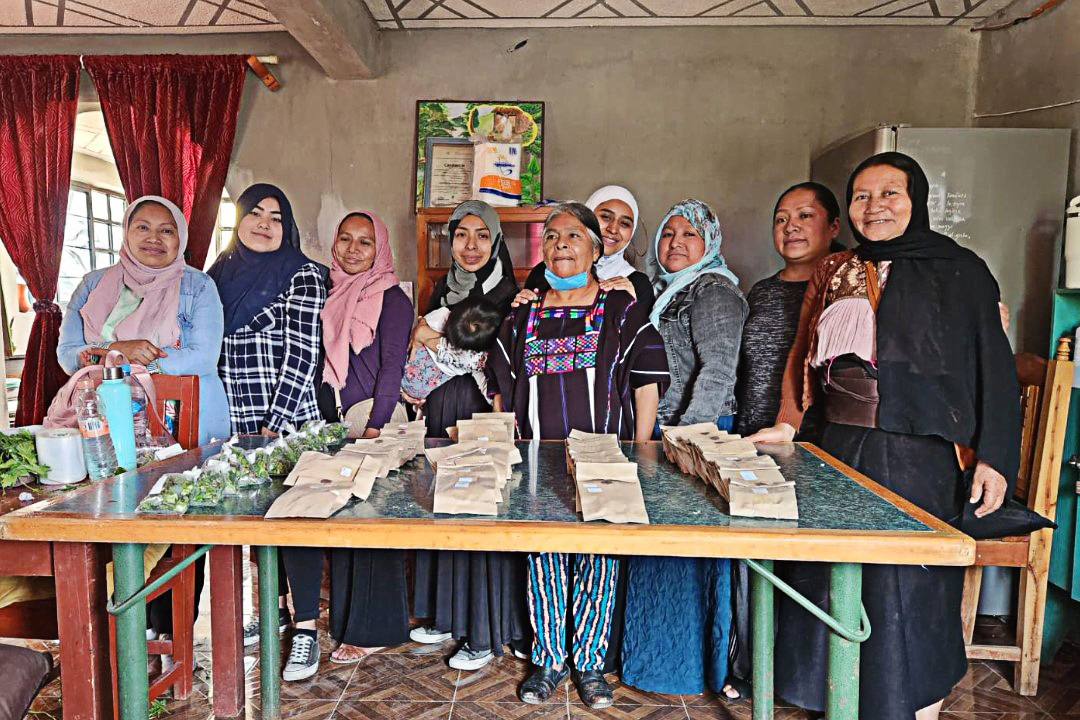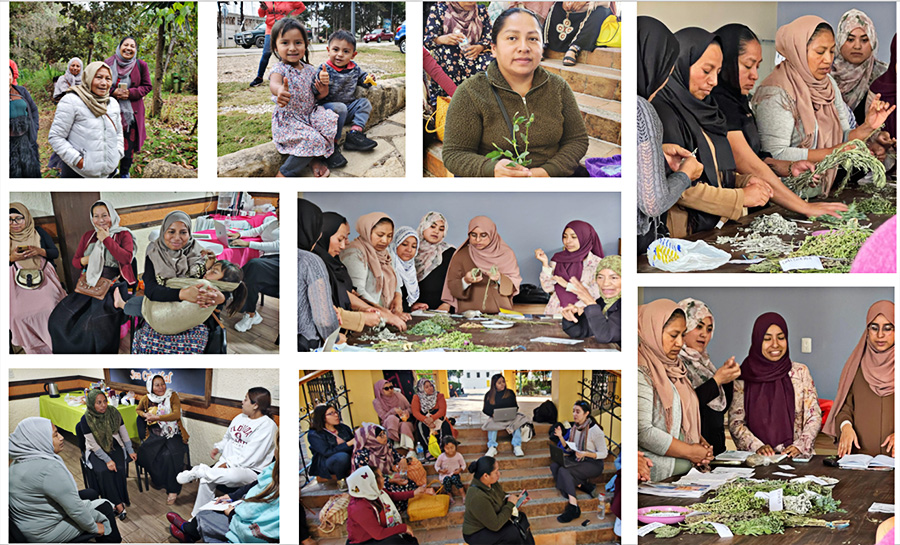
This story appears in the fall 2025 issue of The Torch Magazine and is part of Florida State University’s Celebration of International Education
How do communities define education beyond the walls of a classroom? Researchers at Florida State University’s Anne Spencer Daves College of Education, Health, and Human Sciences (Anne’s College) are leading a collaborative effort to answer that question and advance understanding of the different ways people learn across cultures.
Specifically, researchers are exploring how Indigenous Maya youth communities in Belize connect their traditional knowledge with formal education systems. The interdisciplinary team is also examining how learning can be reimagined to bridge classroom instruction with more immersive learning experiences.
The project’s roots stretch back to 2021 when Ayesha Khurshid, associate professor of International and Multicultural Education in the Department of Educational Leadership and Policy Studies, and Melba Marin-Velasquez, research assistant at FSU’s Learning Systems Institute and Anne’s College alumna, began working together in Mexico.
From Mexico to Belize
Khurshid and Marin-Velazquez’s initial work focused on a Maya Muslim community in Chiapas, Mexico, which has traditionally been excluded from formal education systems. “We wanted to understand what it means to be educated and what knowledge production systems and transfer processes within the community looked like,” said Khurshid, whose research strives to connect communities and families to formal schooling. “It started as a life history ethnographic project, but over time, we were very interested in collaborating with the community and building relationships.”
Through shared dialogue, they identified a need within the Maya Muslim Community to preserve ancestral medicinal knowledge that uses food as medicine.
“We partnered with a group of Maya women to course design and implement workshops led by an experienced Maya teacher to teach this knowledge. It is ancestral knowledge that they have preserved and transferred over centuries, but it is being lost because the community is moving to the city,” said Khurshid.
With guidance from an experienced Maya healer, the women participated in intensive workshops on identifying, preparing and teaching traditional plant-based treatments. Eight women received advanced training in this detailed medicinal system, including different models of diagnosis and treatment, Khurshid explained. “Now they’re designing and teaching workshops to pass that knowledge back to their broader community.”

Expanding Global Connections
That experience in Mexico laid the groundwork for how the team now approaches its research in Belize, with a focus on community needs and recognizing that learning flows both ways. Trust- and relationship-building guide their efforts to understand how Maya youth and families in Belize experience education.
The team now includes Lama Jaber, associate professor of science education in the School of Teacher Education, mathematics education doctoral graduate Anairis de la Cruz Benito, and doctoral student Jessica Qian.
According to Jaber, the project challenges traditional notions of what counts as education.
“There’s been a trend to separate these ways of learning as if formal schooling happens only in confined physical spaces within schools or institutions,” she said. “But there are also more natural ways of engaging in teaching and learning through the environment, through more emplaced ways of being, like walks in nature. Our project asks why this distinction exists, and what alternatives might look like.”
For Marin-Velasquez, the project has also rekindled a personal understanding of how learning happens beyond the classroom.
“When we look at the way we’ve been doing school, it’s often isolating; we sit in a room, we observe, we listen,” she said. “But when I think about how I was taught as a child by my grandmother, every walk was a lesson in life. She would point out plants and say, ‘This one will bloom tonight, and this is what it’s good for.’”
That early connection between knowledge and the natural world now shapes her view of education and research.
“It’s about connecting the past, the present, and the future,” Marin-Velasquez explained. “How can learning be whole if you separate the spiritual and emotional from the physical? Every place we walk holds something to teach us.”
“It’s about connecting the past, the present, and the future. How can learning be whole if you separate the spiritual and emotional from the physical? Every place we walk holds something to teach us.”
– Melba Marin-Velasquez, research assistant at FSU’s Learning Systems Institute
Those experiences have prompted the team to rethink what learning means, both within communities and within higher education itself. “As we got to know these Maya college students, we realized how thoughtful, creative, and insightful they were about being indigenous people within their own communal spaces of higher education,” Khurshid said. “They’re asking what could make higher education more conducive for Indigenous students.”
Lessons from Global Research
For the researchers themselves, the project has been transformative. “I’ve been involved in many research and professional development projects throughout my life, and I don’t think I’ve been as transformed in any project as much as I’ve been in this one,” Jaber said. “It helped me face myself more and interrogate assumptions and biases I hadn’t questioned before. It’s changing the way I think as a scholar, an educator, and a person.”
De la Cruz Benito shared a similar reflection after a recent visit brought together Maya women from Mexico and Belize for shared discussions, university visits and cultural exchange.
“Just having that space and seeing how open they were, it moved me deeply, and I have so many beautiful memories from that trip,” she said. “As a Mexican and Indigenous woman, I thought about my own community and family. It made me want to go back and have those conversations, to connect and learn in new ways.”
For Khurshid, those moments exemplify the power of international research and the importance of trust in collaboration. “It’s not merely data, it’s a connection. And that connection can make research valuable not only to academia but to the community itself,” she said.
Marin-Velasquez also noted that trust and language matter deeply when working internationally. “Even when you’re asking for their permission verbally, you have to be careful about what words you’re using and how they’re understood,” she said. “You can’t just insert yourself into a research site. You have to build those relationships so you can see with what Indigenous research calls ‘two-eyed seeing,’ where Western and Indigenous lenses combine.”
While the team’s work spans borders, its takeaways and findings extend directly back to Anne’s College. By building relationships rooted in trust, reciprocity, and shared knowledge, the researchers are strengthening what it means to partner with international communities.
The insights gained from Belize and Mexico are already shaping the team’s approach to designing learning environments that are more responsive, empathetic and connected to students’ lived experiences.
Looking Ahead
Plans are also underway for a symposium at Florida State, where the team and Maya youth researchers from Belize will present their reflections and findings.
Khurshid emphasizes that institutional support has been crucial throughout the process. The team credits Josh Newman, associate dean for research at Anne’s College, and his team, and Andrew Frank, director of FSU’s Native American and Indigenous Studies Center, for making global research efforts possible.
Meanwhile, Katherine Yaun, senior editor within the Anne’s College Office of Research, continues to support the research project in Chiapas, Mexico. Eugenia Millender from the FSU School of Nursing was also involved in the Chiapas project from 2023 to 2025.
“This work wouldn’t have been possible without the college’s support,” Khurshid emphasized. “Our collaborations began here. Internal partnerships opened doors for international ones.”
The internal collaboration is part of what has made the project so meaningful, Jaber says “We came to know each other through FSU. Ayesha and I met through serving on a student dissertation committee, and we really clicked and were interested in each other’s work. That’s the gift of the institution, creating spaces for connection.”




